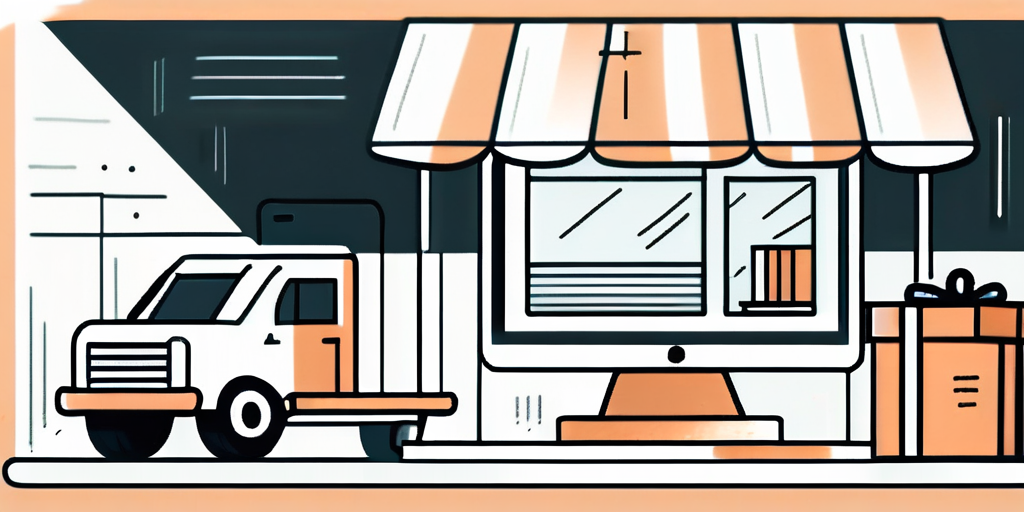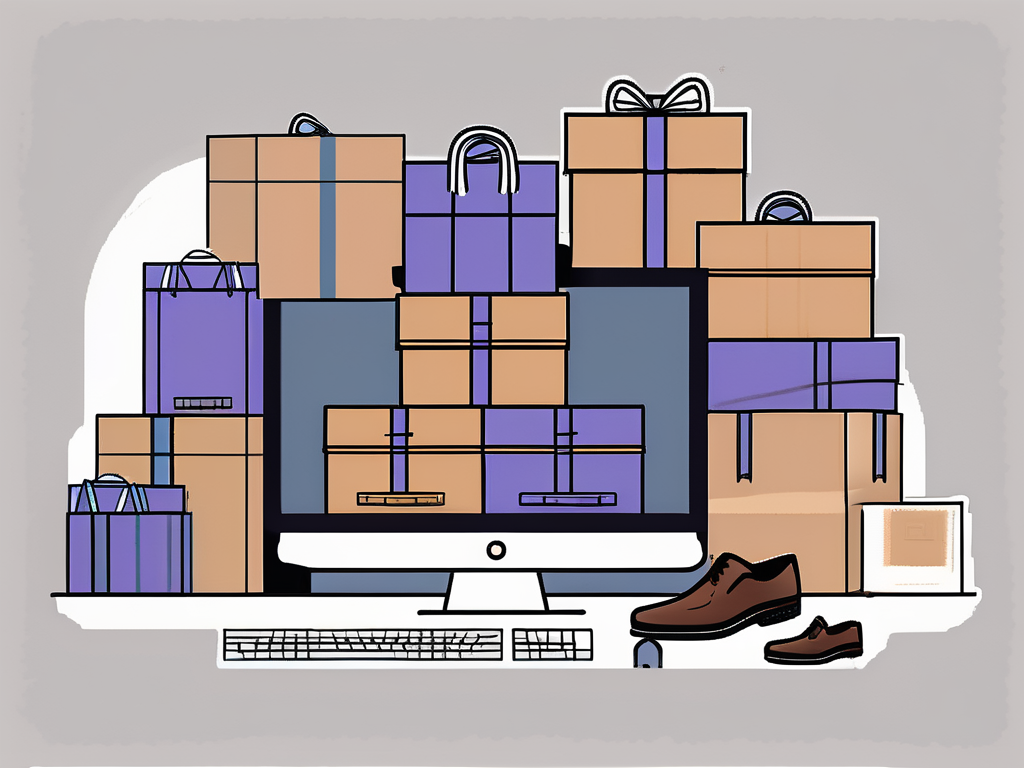Dropshipping is a popular business model that allows entrepreneurs to start an online store and sell products without having to carry any inventory. Instead, the store owner can simply partner with a supplier who will fulfill the orders. In this step-by-step guide, we will walk you through the process of setting up and managing your dropshipping business.
Understanding Dropshipping
Before diving into the logistics of dropshipping, it’s important to understand the basics. Dropshipping is a retail fulfillment method where a store doesn’t keep the products it sells in stock. Instead, when a store sells a product, it purchases the item from a third party and has it shipped directly to the customer. As a result, the merchant never sees or handles the product.

The Basics of Dropshipping
In the dropshipping model, you become the middleman between the customers and the suppliers. Your role is to find products that customers want, market them effectively, and then pass on the orders to the suppliers who will handle the shipping and fulfillment. This eliminates the need for inventory management and reduces the financial risk associated with traditional retail models.
Benefits of Dropshipping
One of the main advantages of dropshipping is the low upfront investment required to start your business. Since you don’t have to purchase inventory upfront, you can start a successful dropshipping business with very little money. Additionally, dropshipping allows you to offer a wide variety of products to your customers without having to manage inventory or deal with the complexities of manufacturing.
Another benefit of dropshipping is the flexibility it offers. With traditional retail models, you are often limited by the physical space of your store. However, with dropshipping, you can sell products from anywhere in the world, as long as you have an internet connection. This opens up a world of opportunities for entrepreneurs who want to reach a global customer base.
Furthermore, dropshipping allows you to test different products and markets with ease. Since you don’t have to commit to purchasing inventory, you can quickly adapt and pivot your business based on customer demand. This agility can be a game-changer, especially in fast-paced industries where trends come and go.
Setting Up Your Dropshipping Business
Now that you understand the basics of dropshipping, let’s explore how to set up your own dropshipping business.

Setting up a dropshipping business can be an exciting and lucrative venture. However, it requires careful planning and attention to detail. In addition to choosing the right products and finding reliable suppliers, there are a few other key steps you need to take to ensure the success of your business.
Choosing the Right Product
Deciding what products to sell is a crucial step in starting your dropshipping business. You need to research and identify products that are in high demand and have the potential for profitability. Take into consideration factors such as market trends, competition, and target audience preferences. It’s also important to choose products that align with your own interests and knowledge to ensure that you can effectively market and sell them.
When selecting products, it’s essential to think long-term. Look for items that have a consistent demand and are not just a passing trend. This will help ensure the sustainability of your business and provide a stable income stream. Additionally, consider the profit margins of the products you choose. While it’s important to offer competitive prices, you also need to make sure that you can generate a reasonable profit.
Finding Reliable Suppliers
Once you have determined the products you want to sell, the next step is finding reliable suppliers to partner with. You can start by reaching out to manufacturers, wholesalers, or dropshipping platforms that connect store owners with suppliers. It’s important to vet potential suppliers carefully to ensure they are reputable, reliable, and able to meet your fulfillment needs. Consider factors such as pricing, product quality, reliability, and shipping options to make an informed decision.
When evaluating suppliers, it’s crucial to establish clear communication channels. You want to work with suppliers who are responsive and can provide timely updates on inventory, shipping, and any potential issues. This will help you maintain a high level of customer satisfaction and ensure that orders are fulfilled promptly.
Furthermore, consider the location of your suppliers. If you’re targeting a specific market, it may be beneficial to work with suppliers who are closer to your target audience. This can help reduce shipping times and costs, resulting in happier customers and potentially higher conversion rates.
By carefully selecting the right products and finding reliable suppliers, you are setting a solid foundation for your dropshipping business. However, there are still other important aspects to consider, such as building an attractive and user-friendly website, implementing effective marketing strategies, and providing exceptional customer service. Stay tuned for our next articles, where we will dive deeper into these topics and help you navigate the world of dropshipping with confidence.
Building Your Dropshipping Website
Having a professional and user-friendly website is essential for the success of your dropshipping business. But what else can you do to make your website stand out from the competition? Let’s dive deeper into the process of building and designing your dropshipping website.
Selecting an E-commerce Platform
There are numerous e-commerce platforms available that can help you build and manage your dropshipping website. Some popular options include Shopify, WooCommerce, and BigCommerce. These platforms provide easy-to-use templates, secure payment gateways, and various integrations to streamline your business operations. However, it’s important to carefully consider your specific needs and goals before making a decision.
For example, Shopify is known for its user-friendly interface and extensive app store, making it a great choice for beginners. On the other hand, WooCommerce offers more flexibility and customization options, making it ideal for those with coding knowledge. BigCommerce, with its robust built-in features, is often favored by larger businesses.
Designing Your Website for Success
When designing your website, it’s not just about aesthetics. You need to create a visually appealing and intuitive user experience that keeps visitors engaged. Start by selecting a clean and modern template that aligns with your brand identity. Use high-quality images and compelling product descriptions to showcase your products and entice potential customers.
But it doesn’t stop there. To truly succeed, you need to make it easy for customers to navigate through your website and find what they are looking for. Implement clear and logical navigation menus, allowing visitors to effortlessly browse different categories and products. Consider adding a search bar to further enhance the user experience, enabling customers to quickly find specific items.
Another crucial aspect of website design is search engine optimization (SEO). By optimizing your website for search engines, you can improve its visibility and attract organic traffic. Conduct keyword research to identify relevant search terms and incorporate them strategically into your website’s content. This will help search engines understand what your website is about and rank it higher in search results.
Lastly, building trust and credibility is vital for any online business. Consider adding customer reviews and testimonials to your website. Positive feedback from satisfied customers can significantly influence potential buyers’ decisions. Encourage customers to leave reviews by offering incentives or rewards, and prominently display these testimonials on your website to build trust with new visitors.
By carefully selecting the right e-commerce platform and designing your website with these tips in mind, you’ll be well on your way to building a successful dropshipping business.
Managing Your Dropshipping Operations
Once your dropshipping business is up and running, it’s important to effectively manage your operations to ensure efficient order fulfillment and customer satisfaction.

Handling Orders and Inventory
As orders start coming in, it’s crucial to have a streamlined process in place for handling and fulfilling those orders. Regularly communicate with your suppliers to ensure they are aware of incoming orders and can fulfill them promptly. Monitor inventory levels to ensure products are always available for purchase. Consider implementing inventory management software to automate and optimize this process.
Dealing with Returns and Refunds
Inevitably, there will be instances where customers need to return products or request refunds. Have a clear and easy-to-understand return policy in place to handle these situations efficiently. Communicate openly with customers and address their concerns promptly to maintain positive customer relationships.
Marketing Your Dropshipping Business
Now that you have set up your dropshipping business and have a fully functioning website, it’s time to focus on marketing and promoting your products to generate sales.
Developing a Marketing Strategy
To successfully market your dropshipping business, you need to develop a comprehensive marketing strategy. Identify your target audience and understand their preferences and behaviors. Implement various marketing channels such as social media advertising, search engine marketing, email marketing, and content marketing to reach your target audience effectively.
Utilizing Social Media and SEO
Social media platforms such as Facebook, Instagram, and Pinterest provide great opportunities for promoting your dropshipping products. Use engaging visuals, compelling copy, and targeted ads to attract potential customers. Additionally, invest in search engine optimization (SEO) techniques to improve your website’s ranking in search engine results pages, driving more organic traffic to your store.
By following this step-by-step guide, you can start and succeed in your dropshipping business. Remember to continually analyze, adapt, and optimize your strategies to stay ahead in this competitive online retail landscape. Good luck!


